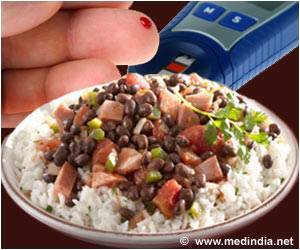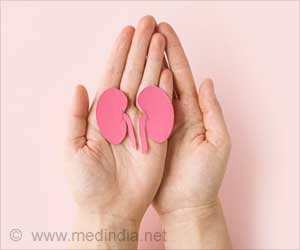Originating as a treatment for kidney and heart issues, the rice diet now offers insights into health management and diet control- but does it fit modern needs?
- The rice diet initially treated kidney disease and hypertension but is now often used for short-term weight loss
- Its restrictive nature can lead to nutritional deficiencies, muscle loss, and possible metabolic slowdown
- Consulting a healthcare professional is essential before starting the rice diet due to its risks and limitations
Dr. Walter Kempner's rice diet was originally created in the 1930s to lower blood pressure and treat kidney disease, decades before it became a weight-loss trend! #ricediet #healthmatters #medindia’
Health Benefits of Rice Diet
Kempner's rice diet was designed to cure serious illnesses like hypertension and chronic kidney disease. The diet consists primarily of white rice, fruit, and fruit juices, with relatively little intake of other items.Kidney Disease
The diet was originally employed as a treatment plan for kidney disease patients. Kempner discovered that the diet's low-protein, low-sodium content reduced the workload on the kidneys, which is critical for maintaining renal function. Rice's high carbohydrate content offers energy without placing additional strain on the kidneys, which is especially beneficial for those with impaired renal function.
Hypertension
For patients with high blood pressure, the rice diet provides a technique to drastically reduce sodium intake, which is advantageous because sodium can raise blood pressure. The diet's concentration over fruits, which are high in potassium and low in sodium, helped balance electrolytes and lower blood pressure.
Some participants had significant improvements, with their blood pressure lowering from 200/112 millimeters of mercury (mm/Hg, a measurement of blood pressure) to 149/96 mm/Hg. Furthermore, 66 out of 72 patients had a smaller heart, 73 out of 82 patients had lower cholesterol levels, and 21 out of 33 patients had improved or completely disappeared from diabetes-related eye problems (1✔ ✔Trusted Source
Who and What Drove Walter Kempner?: The Rice Diet Revisited
Go to source).
Some patients reported significant benefits from the diet, prompting them to strongly endorse Dr. Kempner and his diet. This excellent reaction prompted other physicians to promote the rice diet to their patients as well.
Is The Rice Diet Relevant Today?
Dr. David C. and Mary Kempner's book 'The Rice Diet Solution: Lose Weight, Improve Your Health, and Live Longer' was published in 2006. In it, they updated Walter Kempner's original rice diet for a contemporary audience. According to The Rice Diet Solution, the rice diet has numerous health benefits, including (2✔ ✔Trusted SourceNeurobiologic basis of craving for carbohydrates
Go to source):
- weight loss
- Less bloating
- It may assist with chronic health problems such as hypertension, diabetes, and heart disease
- Teaches portion control
- Includes more fresh fruits and veggies
- The diet also encourages lifestyle improvements such as exercise, relaxation, mindful eating, and socializing.
Is the Rice Diet Ideal for Weight Loss?
Despite its potential for quick weight loss, the rice diet has some limitations that make it less suited for long-term weight management, including:Nutritional deficiencies:
The rice diet is restricted, which can cause nutritional deficiencies. It lacks vital nutrients including protein, healthy fats, vitamins, and minerals, which can contribute to a compromised immune system.Muscle loss:
Because the diet is low in protein, it may induce loss of lean muscle mass. Protein is required for muscle tissue maintenance, and a lack of it can reduce muscle strength and metabolic rate. This can be detrimental to long-term weight management because muscle loss reduces the quantity of calories burnt at rest.Metabolic slowdown:
When the body detects a severe caloric deficit, it may enter starvation mode, slowing the metabolic rate to conserve energy. This can make it more difficult to lose weight and simpler to regain it once normal eating habits return.Other Potential Risks of Rice Diet
Besides its limits for weight loss, the rice diet carries other risks too:Insufficient Long-Term Evidence:
Although Kempner's diet provided some initial benefits in terms of lowering symptoms of renal failure and hypertension, there was little long-term proof of its effectiveness and safety. The diet is considerably different from what is commonly suggested, making it difficult to determine whether it is sustainable or safe over time.Potential for Adverse Effects:
The diet's low fat and protein content may result in some unfavorable side effects, such as a weak immune system or other health issues. Inadequate intake of necessary fats and protein can impair bodily processes and general health.How To Follow the Rice Diet?
If you are thinking about trying the rice diet, you should first comprehend its guidelines and proceed with caution. Here's how it usually works (1✔ ✔Trusted SourceWho and What Drove Walter Kempner?: The Rice Diet Revisited
Go to source):
Rice:
White rice is the primary dietary source and should account for the majority of your daily consumption.Fruit:
A variety of fruits is recommended since they include necessary vitamins, minerals, and fiber. Fruit juices may also be added.Other foods are limited:
The diet limits the amount of protein, fat, and veggies consumed.Before beginning the rice diet, contact your healthcare physician or a trained dietitian to confirm it meets your health needs and goals. They can offer advice on how to reduce potential dangers and keep your diet well-balanced.
How Does The Rice Diet Work?
The Rice Diet Solution divides the rice diet into three distinct phases, each with its own set of goals and nutritional restrictions (2✔ ✔Trusted SourceNeurobiologic basis of craving for carbohydrates
Go to source). Before beginning any new diet, consult with your healthcare professional to ensure that it is safe and appropriate for your needs.
Phase One: Detox
The first phase of the rice diet is intended as a cleansing period. During this phase, the diet is highly limited, consisting mainly of rice and fruit. The purpose is to detoxify the body and limit the consumption of potentially dangerous substances. This includes:
- The average daily calorie intake is between 800 and 1,000 calories.
- You will normally consume a lot of white rice, as well as fruits and drinks.
- The diet's low-protein and low-fat content attempts to ease the strain on the digestive system and kidneys.
Phase 2: Weight Loss
The second stage of the rice diet focuses on weight loss. It retains the fundamental concepts of rice and fruit-eating while introducing more variety and new food groups. This includes:
- Along with rice and fruit, this phase may include small amounts of vegetables and low-fat meats like chicken or fish. The idea is to produce a calorie deficit while maintaining necessary nutrients.
- This period usually requires a daily consumption of 1,200 to 1,500 calories.
Phase 3: Maintenance
The third phase of the rice diet aims to help people maintain their weight loss and overall health. This includes:
- A more diverse diet, containing a broader choice of fruits, dairy, vegetables, lean meats, healthy fats, and whole grains. The emphasis remains on moderation and balance.
- Allows for more calories: 200 each week till you stop losing weight.
White Rice vs. Brown Rice
Although brown rice is a more nutrient-dense option, white rice is frequently favored for persons with kidney difficulties because:- Lower phosphorus: White rice contains less phosphorus, which is beneficial for people who have kidney problems because their kidneys struggle to process excess phosphorus.
- Low postassium levels: It has less potassium than brown rice, which helps to avoid high potassium levels, which can be dangerous for persons with kidney problems.
Those considering the rice diet should carefully examine these factors and seek professional guidance to ensure it is a safe and appropriate option. A balanced, diverse diet and sustained lifestyle adjustments are the most effective ways to achieve long-term health and weight management.
References:
- Who and What Drove Walter Kempner?: The Rice Diet Revisited - (https://www.ahajournals.org/doi/10.1161/hypertensionaha.114.03946)
- Neurobiologic basis of craving for carbohydrates - (https://www.sciencedirect.com/science/article/abs/pii/S0899900713002980)
Source-Medindia
















